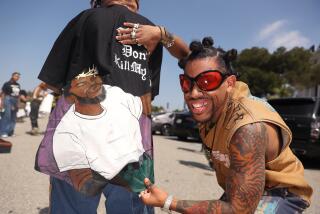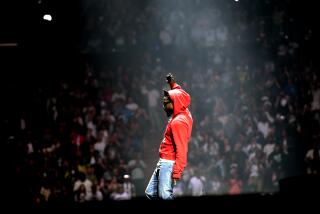Hip-hop fans and royalty celebrate the life of DMX at Brooklyn’s Barclays Center
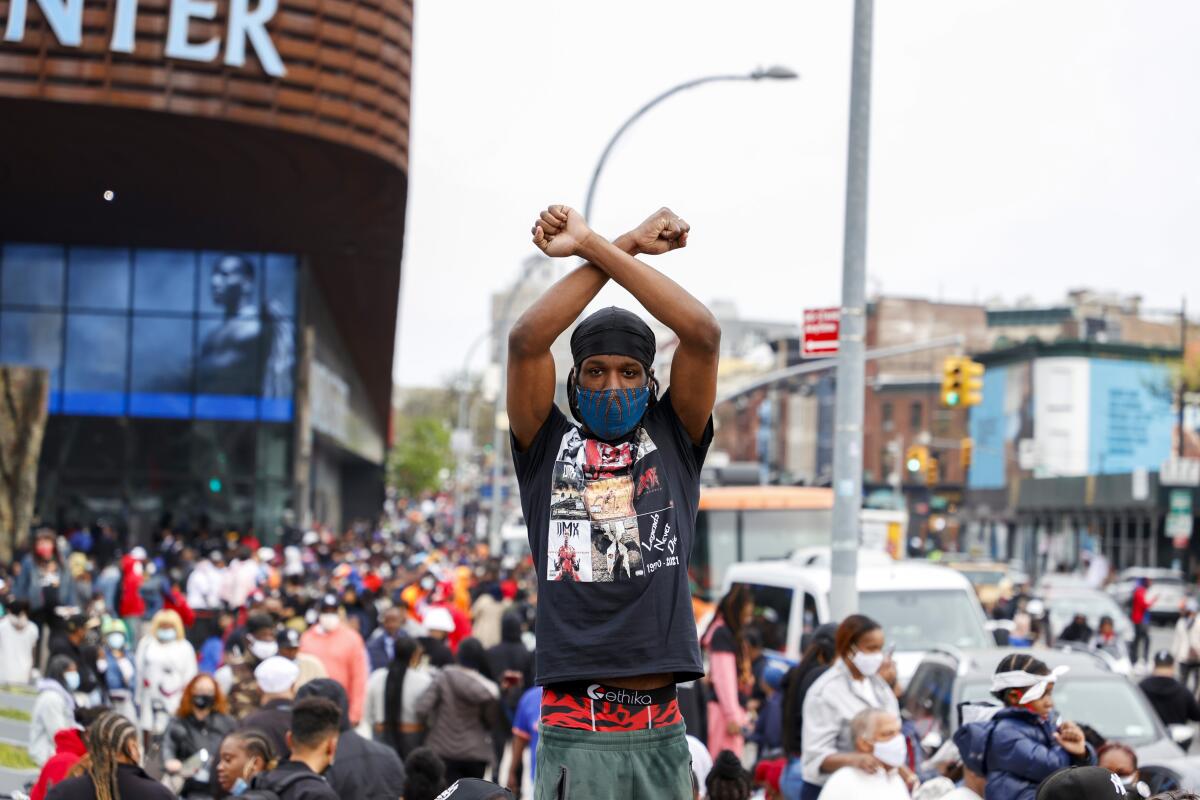
BROOKLYN — They gathered to pray for the man who spent his entire life praying for them. Cohorts, fellow Ruff Ryders, acolytes. Baby mothers and his grieving children, childhood friends and former inmates.
Hundreds of well-wishers gathered inside Brooklyn’s Barclays Center on Saturday afternoon to send off DMX, the hip-hop star who died on April 9 at age 50, after suffering a heart attack following a reported drug overdose. COVID-19 restrictions held the arena’s capacity to 10%, and the audience was limited to family, friends, some lifelong fans, rap royalty (Jay-Z, Beyoncé, Bobby Shmurda and Busta Rhymes were in attendance) and scores of Ruff Ryders — the famed rap label-slash-motorcycle club — with R’s on their leather vests.
The DMX: Celebration of Life memorial event was livestreamed on DMX’s YouTube channel; on Sunday, BET also livestreamed a private funeral service.
The Yonkers, N.Y.-born rapper and actor, born Earl Simmons, led a tumultuous life, marked by periods of addiction and incarceration but also filled, as noted by many of the speakers, with a generosity of spirit, a devotion to scripture and a transfixing charisma that propelled him to the top of the music world, with five consecutive albums that debuted at No. 1 and hits that have yet to leave DJ rotations.
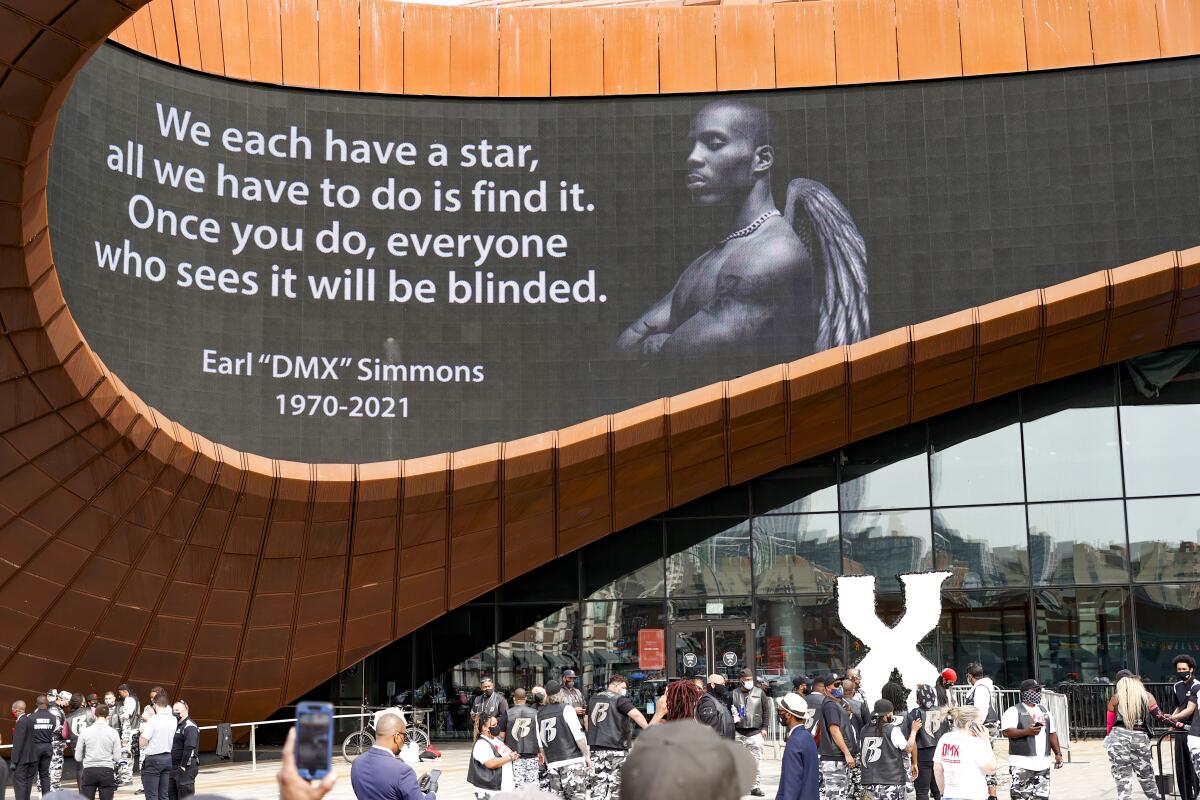
His grade-school-age son Manny, one of DMX’s 15 offspring who lined up onstage, declared that his father taught him how to be great, but he took a few seconds to cry before he could get the words out. In one of the afternoon’s most touching moments, DMX’s daughter Sonovah Junior paid tribute with her version of his 1998 single “Slippin’”: “I’m learning to hold my head up / My daddy’s still holding my hand so I gotta stand up.”
The speakers — including members of the Lox, Nas, Eve and Swizz Beatz — told of how DMX’s guttural voice and outlaw persona opened a path to commercial success in an era dominated by the glossy pop-rap of Diddy’s Bad Boy Records. To know DMX was to learn how vulnerability and grit could coexist. Nas remembered his time filming 1998’s noir “Belly” and seeing DMX with “tears in his eyes because he knew about the journey he was about to embark on.”
Ruff Ryders labelmate Drag-On told the crowd that DMX “taught me everything I know. The air I breathe is what he put in my lungs.”
Ruff Ryder Charles Taylor, who goes by Mic Supreme, recalled opening for DMX one night bandaged up after a bike crash. He said DMX gave him props for his work ethic. Taylor’s scars are now dark patches on his forearms, markings he showed off as if they were blessed.
“Even for the people that’s outside [the arena] who can’t even be in here, he had that same impact,” Taylor said. “Because any of those people outside, he would stop and want to have a conversation and want to know about them.”
As DMX’s blood-red casket lay at the center of Barclays, Kanye West’s Sunday Service Choir, in matching red hoodies, sang renditions of their “Back to Life” and West’s “Ultralight Beam” skyward with chest-vibrating force. They formed a semicircle around the casket, as if to physically protect DMX’s manifested spirit.
After producer Swizz Beatz led the crowd in a version of DMX’s “Ruff Ryders’ Anthem,” the song that started Swizz’s career, people began trickling through the exits, eventually leaving the casket alone amid the stage’s stark white backdrop.
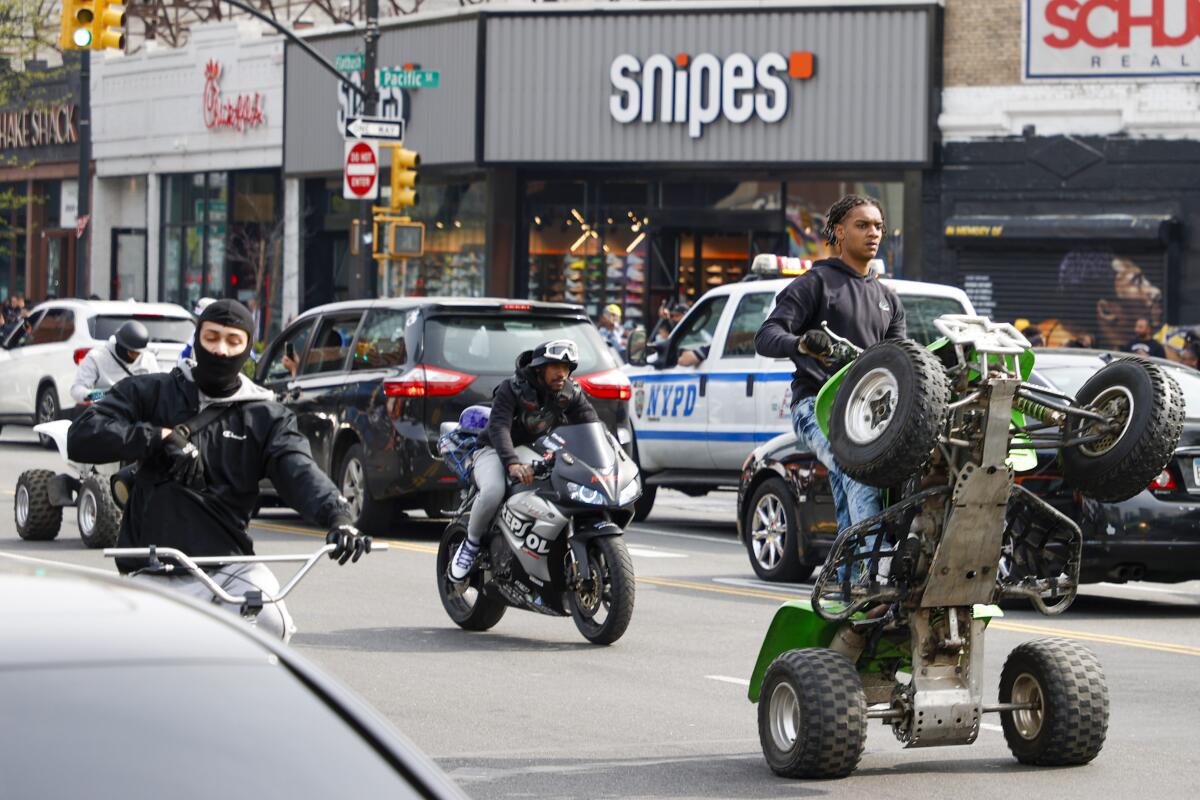
Meanwhile, outside the arena, an even larger crowd joyfully blasted DMX’s music in tribute, through car sound systems and Bluetooth speakers.
Earlier, police had cleared the famously congested intersection of Atlantic and Flatbush avenues to make way for a 1,000-person-strong Yonkers-to-Brooklyn motorcade escorting DMX’s casket, which was carried aboard a monster truck with the words “LONG LIVE DMX’’ displayed on its side. The procession of motorcycles made its way past Barclays Center just before 2 p.m. and filled the air with the running motors that, like the dog barks that punctuated his songs, announced DMX’s presence throughout his life.
“I’m his mirror,” said Dyran Sloan, a 61-year-old Brooklyn resident. “He helped me. He died for me. I got nothing but love for him not because he died for me, but his message was about saving others. He was real … the ’hood was his home.”
More to Read
The biggest entertainment stories
Get our big stories about Hollywood, film, television, music, arts, culture and more right in your inbox as soon as they publish.
You may occasionally receive promotional content from the Los Angeles Times.

